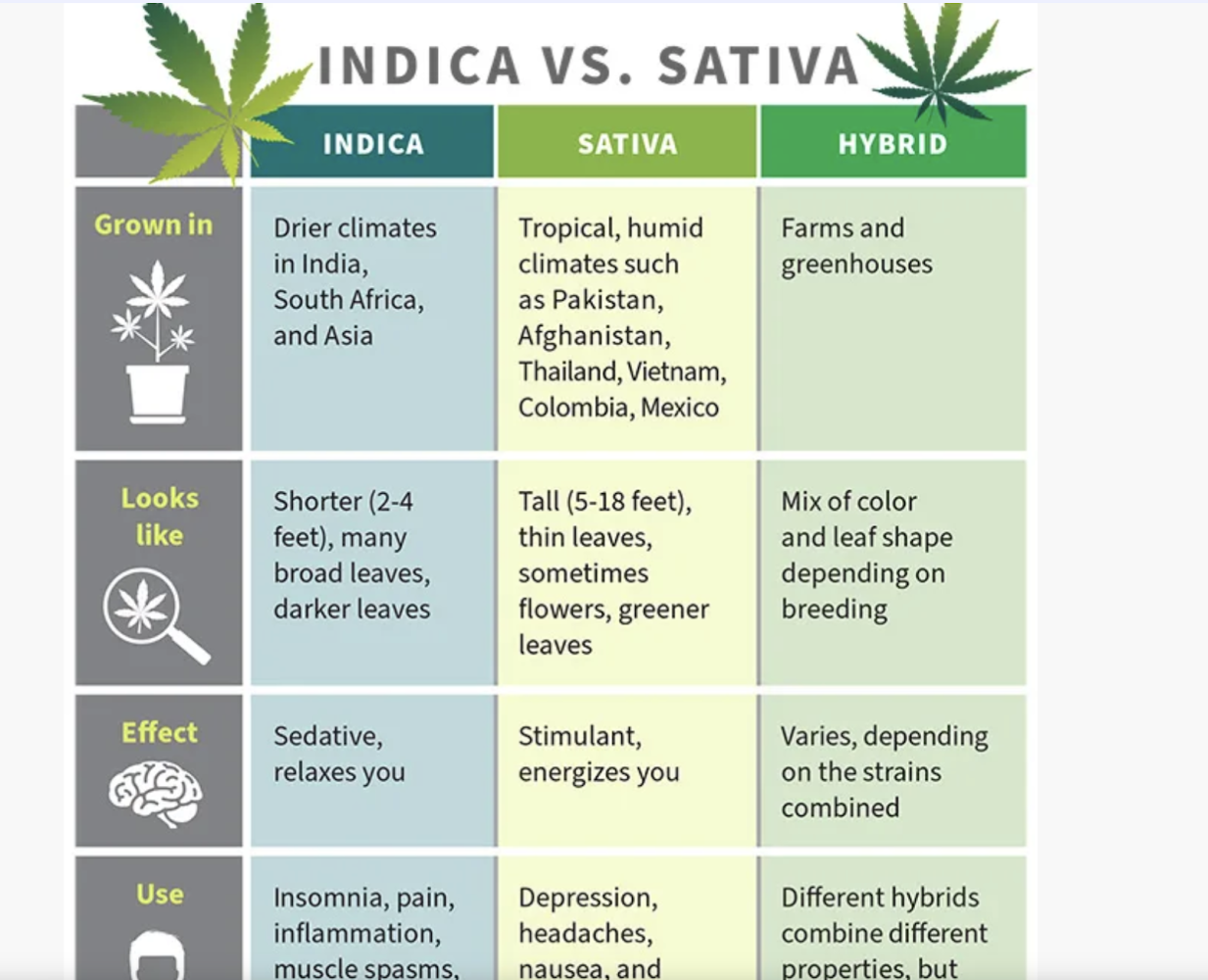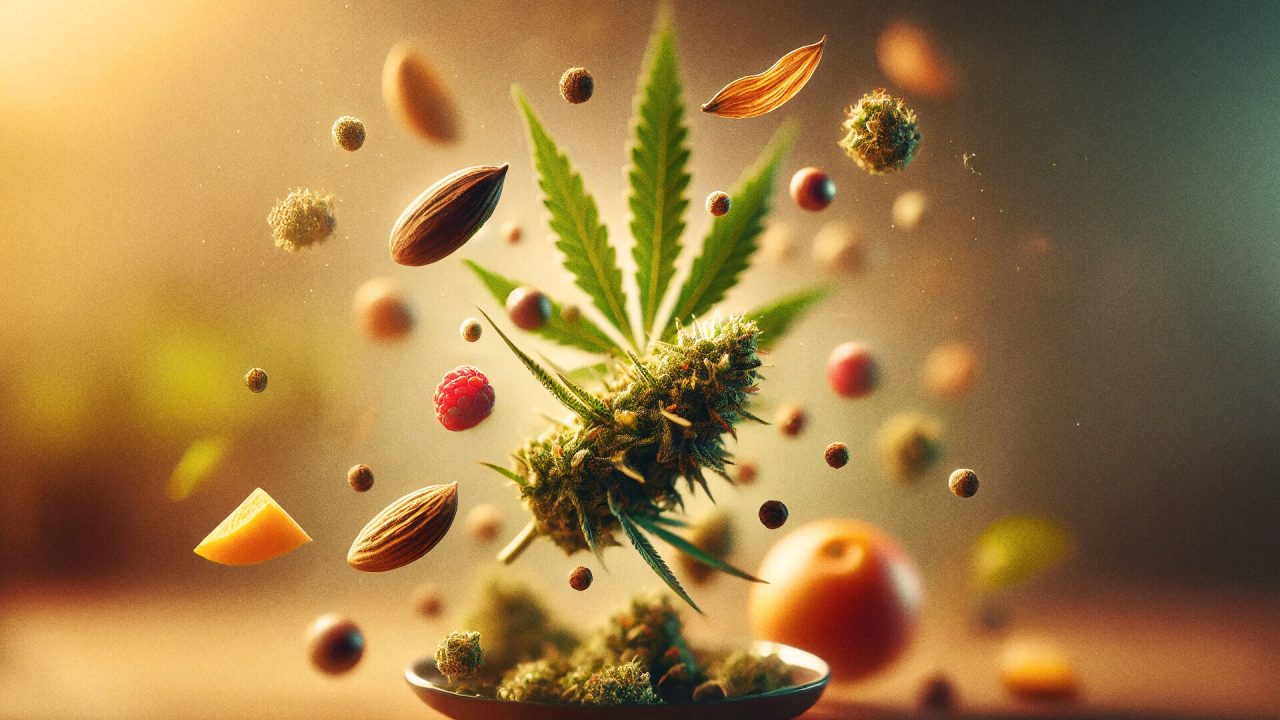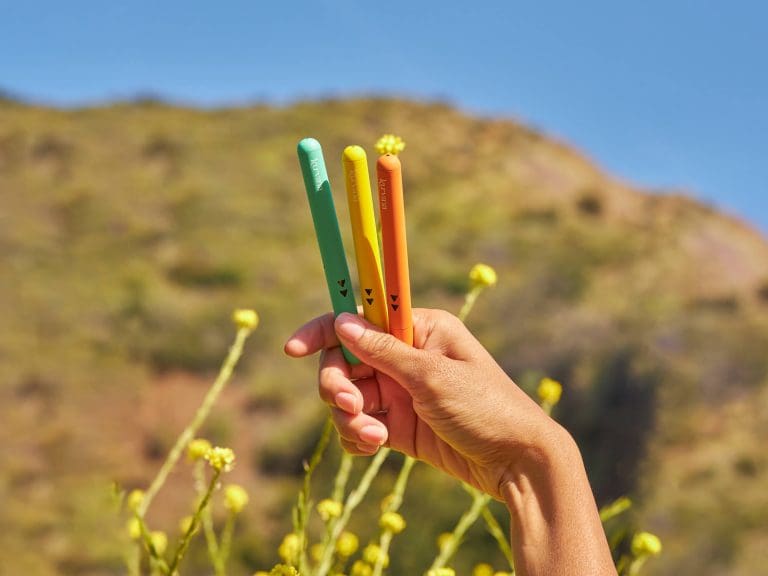
Does Sativa Make You Hungry?
Sativa strains are well-known for their uplifting and energizing effects, but many users wonder, does sativa make you hungry? If you’re curious about how these cannabis strains interact with appetite, you’re not alone. In this article, we’ll dive into the effects of sativa on hunger and answer common questions such as does sativa give you munchies? and does sativa suppress appetite?
We’ll also explore the science behind how cannabis stimulates hunger, the differences between sativa and indica for appetite stimulation, and Kurvana’s best sativa cartridges for anyone seeking to manage cravings. Be sure to check out Kurvana’s 10 best sativa cartridges of 2024!
Understanding Sativa: Effects on Appetite
Sativa strains are often associated with creativity, mental clarity, and enhanced focus. However, their influence on food cravings can be complex and varies from person to person. While sativas are generally thought to be less likely to induce the “munchies” than indica strains, they can still affect your desire to eat. This depends on a range of factors, including the specific strain, the cannabinoids and terpenes it contains, and your own body chemistry.
The Science Behind Cannabis and Appetite Stimulation
Cannabis, particularly strains high in THC, has long been associated with stimulating appetite. This effect is primarily due to the way THC interacts with the body’s endocannabinoid system (ECS). The ECS is responsible for regulating numerous physiological functions, including appetite, mood, and sleep. THC binds to CB1 receptors in the brain, which can trigger the release of ghrelin, a hormone commonly known as the “hunger hormone.”
A significant amount of research has been conducted on how cannabis can make people feel hungrier than usual. THC has been shown to enhance the sense of taste and smell, making food more enjoyable, which in turn increases food intake.
Studies also reveal that cannabis affects the hypothalamus, a part of the brain that regulates hunger and satiety. When THC binds to receptors in this region, it can signal to the body that it’s time to eat, even if you’ve recently had a meal.
Furthermore, the “munchies” are not only a product of THC but also of the interaction between THC and certain terpenes like myrcene and limonene, which we’ll discuss in more detail later. This is why certain strains can stimulate hunger, despite their typically energizing effects.
Does Sativa Make You Hungry?
So, does sativa make you hungry? The answer isn’t straightforward. While many people experience an increased desire to snack after consuming cannabis, this effect is more commonly linked to indica strains due to their relaxing and sedative properties. Sativa, on the other hand, is more likely to enhance energy levels and focus, which may make hunger less noticeable. However, the stimulating effects can still cause some users to feel an increased desire for food, especially in strains high in THC.
THC (tetrahydrocannabinol) is the primary psychoactive compound in cannabis responsible for stimulating appetite. When consumed, THC interacts with the body’s endocannabinoid system (ECS), which plays a critical role in regulating various functions, including hunger. Strains that are potent in THC may indeed make you feel hungry, even if they don’t produce the same intense urge to eat that indica strains often do.
Does Sativa Give You Munchies?
Another question frequently asked is does sativa give you the munchies? While it’s true that the “munchies”—an intense craving for food after consuming cannabis—are often associated with indica strains, sativa strains can also trigger this response. The extent of this effect depends on the strain’s THC content and the individual’s body chemistry. Strains high in THC are more likely to cause the munchies, regardless of whether they are sativa or indica.
Sativas known for stimulating creativity and energy may also cause a slight increase in appetite. This is because THC activates certain brain receptors that boost the production of ghrelin, the hormone responsible for making you feel hungry. Therefore, while some strains may not induce a strong craving for junk food, they can still increase your appetite in more subtle ways.
Sativa vs. Indica for Appetite: A Detailed Comparison

When comparing sativa and indica strains in terms of appetite stimulation, several key differences emerge. Indica strains are typically associated with relaxation, body-heavy effects, and a strong case of the munchies.
The reason for this is primarily due to indica’s terpene profile, which often includes myrcene—a compound that is linked to sedative and appetite-stimulating effects. Indica strains also tend to have a calming influence on the body, which might make users more aware of hunger or more inclined to relax and indulge in food.
Sativa, on the other hand, is known for its energizing and cerebral effects, which may suppress appetite for some users. However, this is not a rule. Some strains of sativa, especially those high in THC, can still stimulate appetite, albeit less aggressively than indica. They are more likely to heighten focus and creativity, making the user less focused on food. For some people, this increase in energy can suppress hunger temporarily, especially when engaging in physical or mental activities.
Hybrid strains also come into play here. Hybrids combine both sativa and indica genetics and may offer a balanced effect on appetite. Depending on the dominant strain type, a hybrid could either stimulate hunger or suppress it.
What Sativa Strains Make You Hungry?
What strain makes you hungry when it comes to sativas? While sativa strains are generally more energizing and cerebral, some are known to stimulate appetite due to their unique cannabinoid and terpene profiles. The best strains for this effect tend to be those with high THC levels and certain terpenes like myrcene, which is often found in indica but can also be present in sativa strains.
Kurvana offers a variety of sativa strains that can enhance your mood, energy, and even appetite.Some of the most popular sativa strains from Kurvana that could potentially make you hungry include:
- Pineapple Express: Known for its euphoric and energizing effects, Pineapple Express might also help stimulate appetite thanks to its high THC content.
- Blue Dream: This potent sativa strain delivers a pleasant burst of energy but also contains cannabinoids and terpenes that can gently stimulate hunger.
- Cactus Cooler: This cross of Blue Dream and OG Kush is bursting with sweet, desert fruit flavors that just may pique your appetite!
- C. Jack: This strain’s sweet citrus and pine aroma is just as coveted as its tendency to give the end user a creative edge.
Each of these strains offers unique effects that may encourage a healthy appetite while keeping you mentally alert and focused.
Does Sativa Suppress Appetite?
Contrary to the belief that cannabis always makes you hungry, some users wonder if certain strains can actually suppress appetite. For some people, especially those using specific strains to stay productive and focused, the answer could be yes. The uplifting and energizing properties of sativa may make hunger less of a priority, especially if you’re engaged in creative activities or physical tasks.
Certain terpenes in sativa strains, like limonene and pinene, are believed to have appetite-suppressing qualities. These terpenes, often associated with increased alertness and a mood boost, may reduce the likelihood of experiencing intense hunger or cravings.
However, this varies from person to person and is often influenced by other factors like strain potency and individual body chemistry.
Cannabis and Weight Management
Contrary to the common belief that cannabis leads to weight gain due to the “munchies,” some research suggests that cannabinoids may play a role in weight regulation. Studies have shown that certain compounds in cannabis, particularly tetrahydrocannabivarin (THCV), may act as appetite suppressants. THCV, found in higher concentrations in certain sativa strains, can block the CB1 receptors in the brain, which are responsible for hunger stimulation. In moderate doses, THCV has been associated with reduced appetite and increased energy metabolism.
One study revealed that regular cannabis users tend to have lower body mass indexes (BMIs) compared to non-users, despite potentially consuming more calories. This phenomenon may be due to cannabinoids’ effect on metabolic processes.
Additionally, CBD, another cannabinoid present in cannabis, may play a role in weight regulation by promoting the conversion of white fat into brown fat, which burns calories more efficiently. Research in this area is ongoing.
Comparing Sativa With Other Strains
When it comes to cannabis and appetite, each unique strain will vary slightly, but generally speaking, indica strains are well-known for producing the “munchies,” while their sativa cousins are less likely to cause intense hunger pangs. Indica strains tend to relax both the mind and body, which can often result in increased cravings for food.
Hybrid strains, which combine both sativa and indica genetics, may also influence appetite. Depending on the dominant strain type and terpene profile, hybrid strains can either increase or suppress appetite. It all comes down to how the individual cannabinoids and terpenes interact with your endocannabinoid system (ECS).
The Role of Body Chemistry in How You React to Sativa
Your body’s unique chemistry plays a significant role in how you respond to particular strains and whether they make you hungry. Factors such as metabolism, tolerance, and even mood can influence how cannabis affects your appetite. For example, someone with a high tolerance to THC might not experience as strong of an appetite-stimulating effect compared to a new user.
Additionally, the endocannabinoid system (ECS) regulates many functions, including appetite. When THC interacts with the ECS, it can either trigger or suppress hunger, depending on how your system responds to the cannabinoids.
Common Terpenes in Sativa Strains
Terpenes are aromatic compounds found in cannabis that contribute to the plant’s unique flavors and effects. Certain terpenes may influence whether you feel hungry after consumption. Common terpenes in sativa strains include:
- Limonene: Known for its citrusy aroma, limonene is often found in sativa strains and is believed to elevate mood and energy levels, potentially reducing hunger.
- Pinene: This pine-scented terpene is thought to promote mental clarity and focus, which might also diminish feelings of hunger.
- Caryophyllene: This spicy, peppery terpene has anti-inflammatory properties and can help reduce stress, which may indirectly influence appetite.
While these terpenes are commonly found in many sativa strains, their effects can vary depending on the strain and the individual user.
Long-Term Effects of Sativa on Cravings and Metabolism
While the short-term effects of sativa are often discussed, it’s worth exploring how regular use might affect appetite and metabolism over time. Consistent use of cannabis may lead to different responses in appetite, depending on the individual’s endocannabinoid system and overall health.
Some users report that after long-term use, their body’s response to THC and other cannabinoids changes, either increasing or decreasing their desire to eat. Additionally, the stimulating effects of sativa could potentially impact metabolism, making users feel more energetic and less inclined to overeat.
Best Times To Use Sativa For Appetite Stimulation
If you’re looking to use sativa to manage your appetite, timing is key. For instance, consuming your cannabis in the morning or afternoon can help you stay productive and focused while maintaining a healthy appetite throughout the day. If your goal is to use sativa to stimulate your appetite, it’s best to consume it about 30 minutes before a meal. This can help increase hunger and make the meal more enjoyable.
On the other hand, if you’re looking to suppress appetite, consuming cannabis earlier in the day, regardless of the strain, while staying active, may help curb unnecessary snacking. The terpenes’ energizing effects can help you stay focused and engaged without feeling the need to eat.
Understanding the ‘Entourage Effect’ and Its Impact on Hunger
The entourage effect is a term used to describe how different cannabinoids and terpenes work together to produce unique effects. This phenomenon is crucial in understanding how sativa strains impact the urge to eat. For example, THC may stimulate appetite on its own, but when combined with certain terpenes, it can amplify or suppress that effect.
In sativa strains, terpenes like limonene and pinene may work with THC to suppress cravings, while other terpenes like myrcene can amplify the hunger-inducing effects of THC. The balance of these compounds creates a nuanced effect that can either stimulate or suppress appetite depending on the strain.
When THC-Induced Hunger Strikes: Healthy Snacks To Keep On Hand
Fortunately, there are plenty of healthy, low-calorie snacks that can satisfy cravings without contributing to weight gain. Here are some snack options to have on hand if cannabis tends to give you a case of the munchies.
1. Vegetable Sticks with Hummus
Fresh vegetables like carrots, cucumbers, celery, and bell peppers make an excellent choice for snacking when you’re feeling hungry. They are low in calories and packed with fiber, which helps you feel full for longer. Pair them with a healthy dip like hummus, which adds a dose of protein and healthy fats, without the guilt. The fiber in vegetables and protein in hummus work together to keep your blood sugar stable, reducing the likelihood of overeating.
2. Air-Popped Popcorn
Popcorn is an excellent low-calorie, high-fiber snack that can curb the urge to overeat. When made without excessive butter and salt, air-popped popcorn is a light, crunchy treat that satisfies cravings for something salty. For an extra nutritional boost, sprinkle on some nutritional yeast, which adds a cheesy flavor without the calories, and is rich in B vitamins.
3. Greek Yogurt with Fresh Berries
Greek yogurt is a great source of protein, and when paired with fresh berries, it becomes a delicious and filling snack. The protein in yogurt can help curb hunger, while the antioxidants and fiber in berries add a naturally sweet flavor without added sugars. Opt for plain Greek yogurt to avoid extra calories from sweeteners, and add a small drizzle of honey or a handful of nuts for some healthy fats and extra flavor.
4. Nuts and Seeds
While nuts and seeds are calorie-dense, they are also rich in healthy fats, fiber, and protein, making them an excellent choice for satisfying hunger in moderation. Almonds, walnuts, sunflower seeds, and chia seeds can be eaten alone or sprinkled over other snacks like yogurt or salads. Stick to small portions—about a handful—to avoid excessive calorie intake.
5. Apple Slices with Nut Butter
Apples are high in fiber and water, helping to fill you up without adding many calories. Pairing apple slices with a small amount of nut butter, such as almond or peanut butter, creates a satisfying balance of sweetness, crunch, and creaminess. The fiber in apples and the healthy fats in nut butter can help control hunger and prevent over-snacking. Be mindful to keep the serving size of nut butter to about one or two tablespoons to avoid unnecessary calorie overload.
6. Edamame
Edamame, or steamed soybeans, are high in protein and fiber, making them a great option for satisfying hunger without consuming many calories. They are also rich in essential nutrients like iron and calcium. A serving of edamame can curb cravings for salty snacks and provide sustained energy due to its protein content. You can lightly season them with sea salt or soy sauce for flavor.
7. Frozen Grapes or Bananas
Frozen fruits like grapes and banana slices can be a refreshing and naturally sweet alternative to processed sugary snacks. The freezing process makes the texture of these fruits more satisfying to chew, and their natural sugars provide a gentle energy boost. Frozen grapes, in particular, are easy to portion out and eat slowly, which helps prevent overeating.
8. Rice Cakes with Avocado
Rice cakes are light and crunchy, making them a perfect canvas for healthy toppings. Topping them with mashed avocado provides a dose of healthy fats, fiber, and essential nutrients like potassium and vitamin E. For added flavor, sprinkle some salt, pepper, and even a dash of chili flakes. This combination provides a filling snack that won’t contribute significantly to your daily calorie intake.
For even more delicious ideas, check our other guide for healthy snack options for when you get the munchies!
4. Explore Kurvana’s Premium Sativa Cartridges
So, does sativa make you hungry? For some, the answer is yes. While sativa strains are typically associated with energy and creativity, they can also increase appetite, particularly if they contain high levels of THC.
Whether you’re seeking to stimulate your appetite or suppress it, sativa offers a diverse range of effects that can be tailored to your personal needs. Be sure to read our best sativa carts guide, and visit our online shop, where you can explore the uplifting and potentially hunger-inducing effects of this remarkable cannabis variety.










